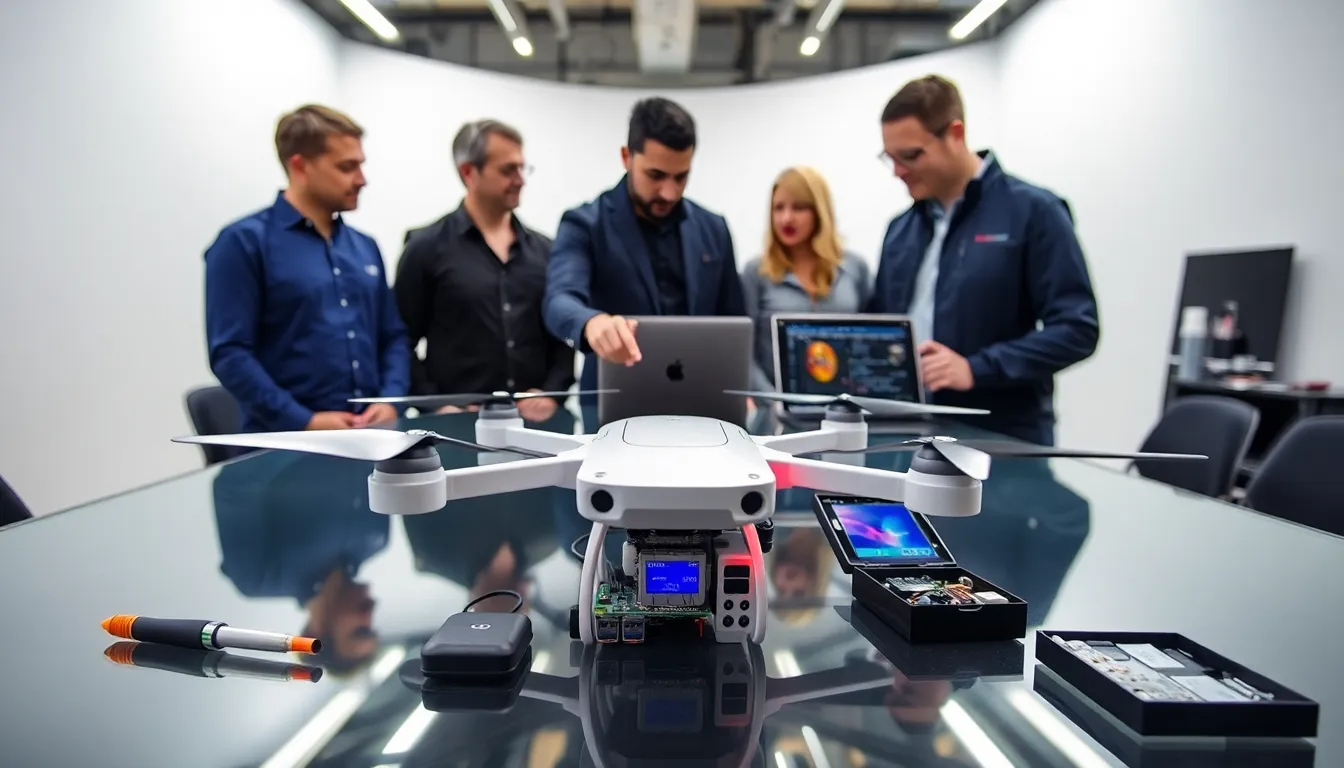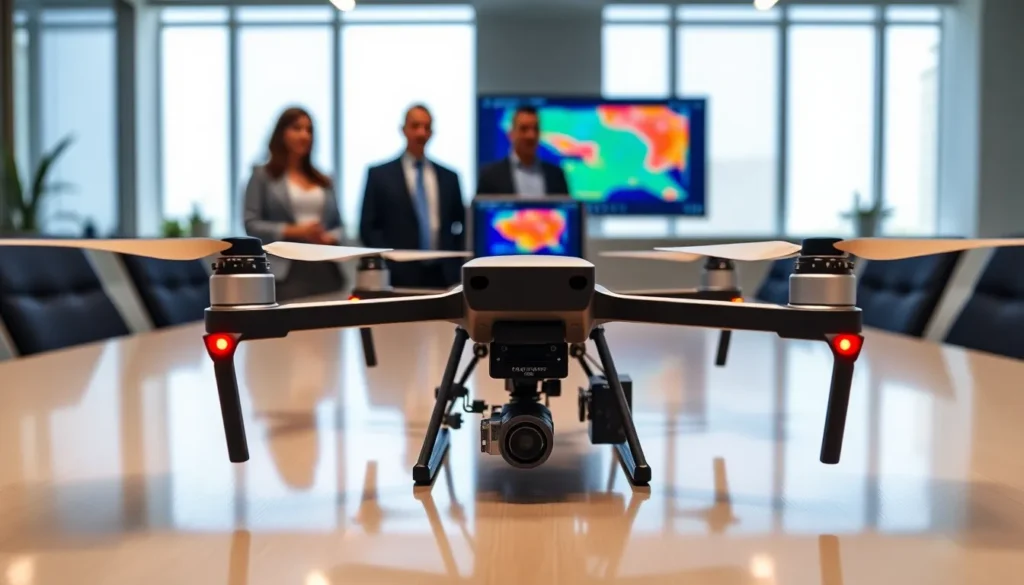Table of Contents
ToggleHave you ever thought about how drones could help us save the day? Enter the world of the Raspberry Pi Zero thermal drone, a gadget that not only takes to the skies but also gives you a hot take on all things thermal. This nimble little hero is like a Swiss Army knife for aerial reconnaissance, making it easier than ever to spot things we usually overlook from the ground. Whether you’re a seasoned drone enthusiast or just curious, you’re about to uncover the amazing possibilities that lie within the Raspberry Pi Zero’s tiny frame. So fasten your seatbelts, figuratively, of course, as we jump into the nitty-gritty.
Overview of the Raspberry Pi Zero

The Raspberry Pi Zero is a compact powerhouse in the realm of computing, smaller than a credit card but with capabilities that can blow your mind. It’s a single-board computer designed to make programming and hardware projects accessible to everyone. So what’s the magic behind this tiny titan? Let’s break it down.
Key Features and Specifications
The Raspberry Pi Zero packs a punch with its:
- 1 GHz, Single-Core CPU: Smooth performance for various tasks without lag.
- 512 MB RAM: Sufficient memory to handle diverse applications.
- USB On-The-Go Port: Offers USB support without the need for complicated setups.
- HDMI and GPIO pins: Connect to displays and other devices with ease.
This little gem runs on Linux-based systems, meaning it’s not just user-friendly, but also great for developers to tinker with.
Applications in Drone Technology
When it comes to drone technology, the Raspberry Pi Zero is revolutionizing how we approach tasks in the sky. Imagine harnessing the power of a tiny computer to survey, signal, and save lives.
Benefits of Using Thermal Imaging Drones
Thermal imaging drones equipped with Raspberry Pi Zero technology open the door to incredible applications. They offer:
- Real-Time Data: Immediate insights allow for quicker decision-making.
- Sensitivity to heat differences: Perfect for spotting temperature variances that the naked eye can’t see.
- Cost-Effectiveness: With affordable components, deploying thermal drones becomes sustainable and practical.
This combination not only enhances efficiency but also paves the way for innovations in various fields.
Use Cases for Raspberry Pi Zero Thermal Drones
Let’s explore the multi-faceted world of use cases for Raspberry Pi Zero thermal drones. From nature to emergencies, their versatility shines brightly.
Environmental Monitoring
In the fight against climate change, monitoring our ecosystems is critical. These drones can help map heat signatures from wildlife or assess vegetation health, enabling conservationists to make informed decisions.
Search and Rescue Operations
Imagine a scenario where seconds count. Thermal drones equipped with Raspberry Pi technology are invaluable in search and rescue missions, quickly identifying body heat in dense environments. They can locate missing persons far more efficiently than teams on foot.
Agricultural Applications
Farming isn’t just about plowing and planting anymore: it’s about smart solutions that drive productivity while minimizing waste. Raspberry Pi Zero thermal drones are a boon to modern agriculture.
They can:
- Assess Crop Health: Identify areas of stress in plants by detecting temperature variations.
- Survey Field Layouts: Provide aerial insights into your land’s topology, assisting in planning.
- Optimize Irrigation: Help farmers understand where water might be needed most, reducing resource use.
The utility of these drones transforms traditional agricultural practices into data-driven strategies.
Building a Raspberry Pi Zero Thermal Drone
Want to build your very own Raspberry Pi Zero thermal drone? Grab your toolkit and follow these simple guidelines.
Components Needed for Assembly
Before diving in, ensure you have:
- Raspberry Pi Zero: The brains of the operation.
- Thermal Camera Module: To capture those all-important heat signatures.
- Drone Frame: The body that takes everything airborne.
- Flight Controller Unit: Keeps everything flying smoothly.
- GPS Module: For accurate navigation.
Step-by-Step Assembly Instructions
- Assemble the Frame: Start by constructing your drone frame based on your chosen model.
- Attach the Raspberry Pi: Securely attach the Raspberry Pi Zero to the frame, connecting it to the flight controller.
- Install the Thermal Camera: Mount the thermal camera module in a position that allows it clear visibility.
- Connect the GPS: Integrate the GPS module to help navigation.
- Power Up: Ensure your drone has a reliable power source, typically a battery pack.
- Calibrate the Sensors: Before taking off, calibrate all components to guarantee a smooth flight.
This DIY approach not only empowers you to customize your drone but gives you insight into its workings.
Programming the Drone for Thermal Imaging
Now that the drone is assembled, it’s time to jump into programming. This step is crucial for functioning seamlessly in various environments.
Challenges and Considerations
Programming can be the trickiest part. Coders must account for:
- Latency: The delay between the capturing of data and its display needs to be minimized.
- Data Processing: Thermal images need to be processed swiftly for real-time feedback.
Through effective coding, users can unlock the true potential of their Raspberry Pi Zero thermal drones.
Future Trends in Thermal Drone Technology
What does the future hold for thermal drone technology? As trends emerge, we can anticipate advancements like:
- Enhanced Sensor Capabilities: Future drones will boast even more sophisticated thermal sensors, offering better accuracy and range.
- AI Integration: The use of artificial intelligence for data analysis will speed up processing times and enhance decision-making.
- Wider Adoption in Various Sectors: Industries like real estate, healthcare, and insurance will increasingly use thermal drones for inspections and assessments.
The horizon looks bright as innovations continue to refine and elevate drone technology.




